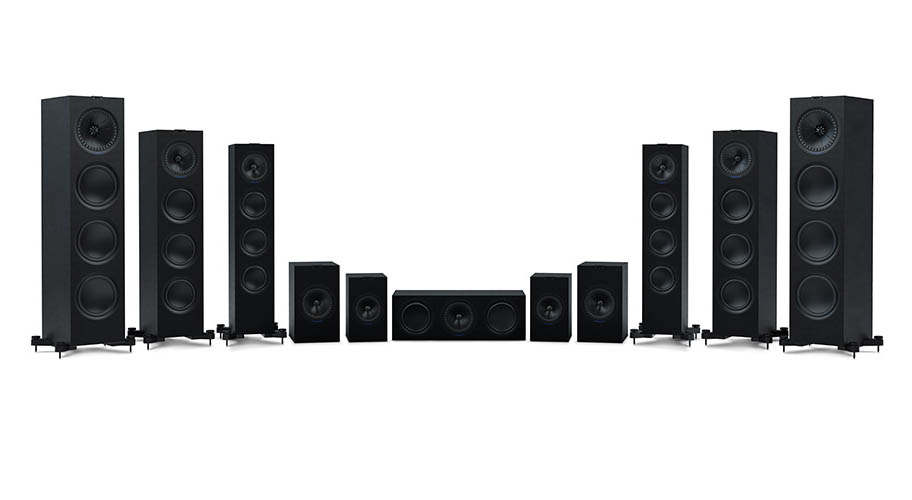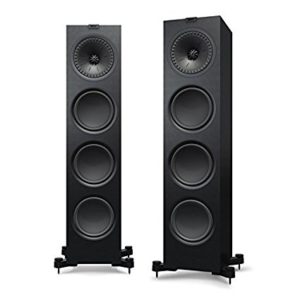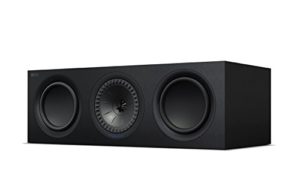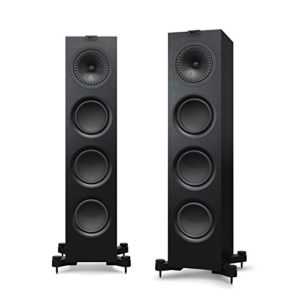Note : Before going any much further in this article, I need to clearly state that this is not intended as an audio expert opinion on the speakers. I’m not equipped, nor competent enough, to do a professional review on speakers. So don’t expect frequency response curves and other graphs, this is really more of a gut feeling article on the speakers after a couple weeks of having them in my dedicated room.
As the typical cycle of theatre room upgraditis hit me over the Holidays, I finally decided it was time to move away from my current Cerwin Vega speaker configuration and try a couple of other brands. Thanks to the advice of Rob over at the AVRant podcast, I decided to sample a couple of speaker brands, including KEF, which I honestly did not know much about other than what I heard about them on that podcast.
I started my testing between multiple brands including my existing Cerwin Vega SL series by ordering a center speaker from each brand and doing blind AB testing between them with a speaker selector box driven by my son. The result was strongly in favour of the KEF center, which made me move forward with a full upgrade in the room. I actually recognized and preferred the KEF over the other brands more than 90% of the time and even my wife confirmed with her own blind test.
So having stopped my selection on the new KEF Q Series 2017, I completed my room update with the following speakers: Q950 towers for the front, Q650C as the center, Q550 towers for the side surrounds, Q750 towers as the rear surrounds and CI200QR in-ceiling speakers for top fronts and top rears. Note that the in-ceiling speakers were not refreshed in 2017, so this article will focus on the main speakers.
Music performance of the Q950
I’ve thrown different kinds of music on various sources to the Q950 and they performed extremely well. In addition to the Uni-Q concentric driver and twitter, the speakers provide one 8″ bass driver and two 8″ bass radiators in the sealed speaker design. Stereo imagery is great, voices are clear and the speakers provide great dynamics. They are rated down to 44 Hz at -3db, and such provide a good bass response for music, but do of course sound even better with subwoofer support for really low bass.
This is really where I saw the most improvements by going from my previous speakers to the new ones. The sheer size and sealed design of the Q650C, with the multi directional aspect of the Uni-Q drive makes dialogue clear and easy to understand from any seat in my room, even the less used seats that are closer to a wall and not centred at all with the screens.
The whole quality of the center channel sound improved also, voices are deeper when they need to be and subtle sounds are also more present and do not compete anymore with dialogue reproduction. This like subtle steps in The Hobbit introduction are now perfectly reproduced and can be heard even with narration going on.
Movie performance of the entire setup
As mentioned before, I completed my 7.2.4 setup with smaller towers of the line. If you wonder why towers and not bookshelves, in my case I did not have stands already and towers were more convenient in my rooms layout than installing bookshelves with wall brackets. Also, adding the price of good quality stands to the Q350s get them actually to the same level of pricing than the Q550s.
The Q550 and Q750 perform extremely well. They are in my room crossed over at 80Hz and the result is a seamless sound between all speakers, including the in-ceiling CI200QR. Demo material like the Leaf and Amaze Dolby Atmos trailer show how well integrated the system is with a true 360 sound experience.
The different movies I watched showed great performance with the different speaker models, with transparent sound from each of them. Again, the Uni-Q design allow sound to be better when you are off axis and this is shows in my non-perfect room.
Aesthetics and installation
The towers are provided with a well built feet system, but I would have wished that pads would be also included for the spikes when using them on a hardwood surface.
The speaker do look good, to me better than the previous Q series models, with a simple layout either in black or white. I would clearly choose the white for a music setup, but of course less reflection on the black models made them the de facto choice for a dedicated home theatre room.
The only visual downside is that the series does not come with the magnetic grills created by KEF for them, you actually have to purchase them separately and they get pricey, up to 45 USD$ each for the Q950. I actually prefer the speakers without grill anyway, but I could see clearly cases where this will annoy people that want to protect their speakers.
Conclusion
As you may have understood from this post, I’m extremely satisfied with the KEF Q Series 2017 performance and appreciate the significant improvement it made in my theatre. I’m now wondering how much of an improvement the R Series would make, but I will keep that for in a couple years when they get their new models.




One thought on “KEF Q Series 2017 Speakers Review”